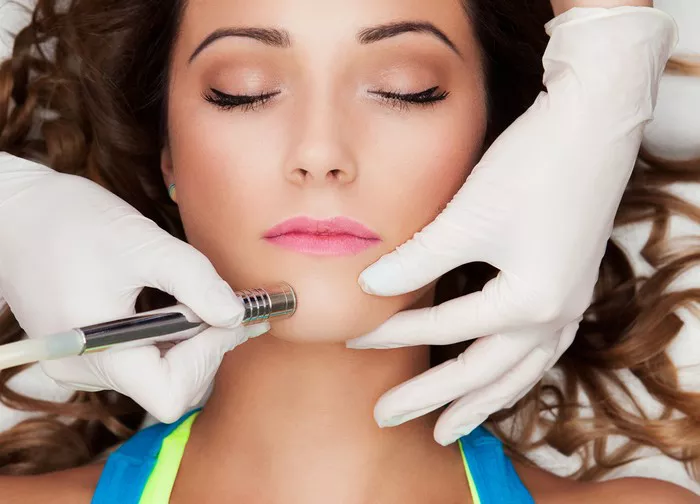Microdermabrasion is a popular non-invasive cosmetic procedure that rejuvenates the skin and helps address a variety of skin concerns. It involves exfoliating the outer layer of the skin using fine crystals or a diamond-tipped wand, stimulating cell turnover and promoting a smoother, more youthful complexion. While microdermabrasion is generally considered safe, like any cosmetic procedure, it can have potential side effects. It is essential to be aware of these side effects to make an informed decision before undergoing microdermabrasion.
1. Redness and Irritation
One of the most common side effects of microdermabrasion is temporary redness and irritation of the treated skin. The exfoliation process can cause the skin to become sensitive, resulting in redness, mild swelling, and a feeling of tightness. These effects are usually mild and subside within a few hours to a day after the procedure. However, individuals with sensitive skin may experience more pronounced redness and irritation. Applying a soothing moisturizer and avoiding harsh skincare products can help alleviate these side effects.
2. Dryness and Flaking
Microdermabrasion can lead to temporary dryness and flaking of the skin. The removal of the outer layer of dead skin cells may disrupt the skin’s moisture barrier, resulting in dry and flaky patches. It is crucial to keep the skin well-moisturized during the recovery period following the procedure. Using a gentle, hydrating moisturizer and avoiding exfoliating products or harsh cleansers can prevent excessive dryness and aid in the skin’s healing process.
3. Sensitivity to Sunlight
Exfoliating the skin through microdermabrasion can make it more susceptible to sun damage. The removal of the outer layer of skin reduces its natural protection against harmful UV rays. Therefore, it is important to apply a broad-spectrum sunscreen with a high SPF before stepping outside. This will help safeguard the skin from sunburns, premature aging, and the risk of developing skin cancer. It is recommended to continue using sunscreen daily even after the initial recovery period to maintain the results and protect the newly revealed skin.
4. Tightness and Discomfort
Some individuals may experience a sensation of tightness or discomfort in the treated area following microdermabrasion. This tight feeling is temporary and usually resolves within a day or two. Applying a gentle moisturizer can help alleviate this sensation. Avoiding harsh products and adhering to a gentle skincare routine will also aid in reducing discomfort during the healing process.
5. Temporary Hyperpigmentation or Hypopigmentation
In rare cases, microdermabrasion can lead to temporary changes in skin pigmentation. Hyperpigmentation, characterized by darkening of the skin, or hypopigmentation, which causes lightening of the skin, may occur. These changes are usually temporary and fade over time. Individuals with a darker skin tone are more prone to hyperpigmentation, so it is essential to discuss your skin type and any previous issues with your dermatologist or aesthetician before undergoing the procedure.
6. Risk of Infection
While the risk of infection is minimal with microdermabrasion, it is still a possibility. The procedure involves exfoliating the skin, which can create small micro-tears that may become susceptible to bacterial or fungal infections if not properly cared for. To minimize this risk, it is important to follow the post-treatment instructions provided by the skincare professional. These instructions may include keeping the treated area clean, avoiding touching or scratching the skin, and refraining from using makeup or other skincare products for a specified period.
7. Bruising and Swelling
In some cases, individuals may experience bruising and swelling after microdermabrasion, particularly if the treatment was performed aggressively or on sensitive skin. These side effects are usually temporary and resolve within a few days. Applying a cold compress to the affected area and keeping the head elevated can help reduce swelling. If the bruising or swelling persists or worsens, it is advisable to consult a healthcare professional.
8. Allergic Reactions
While rare, allergic reactions to the crystals or skincare products used during microdermabrasion can occur. Symptoms of an allergic reaction may include itching, redness, rash, or hives. If you have a known allergy to any specific ingredients or have experienced allergic reactions in the past, it is crucial to inform the skincare professional beforehand. They can take necessary precautions and use alternative products to minimize the risk of an allergic reaction.
9. Unwanted Skin Texture Changes
In some cases, microdermabrasion may cause unintended changes in the skin’s texture. This can include roughness, unevenness, or the appearance of fine lines. These changes are typically temporary and resolve as the skin heals and regenerates. However, it is essential to communicate your concerns with the skincare professional and follow their post-treatment care instructions to optimize the healing process and minimize any undesirable texture changes.
10. Pre-existing Skin Conditions
Individuals with pre-existing skin conditions, such as rosacea, eczema, active acne, or herpes outbreaks, should approach microdermabrasion with caution. These conditions can be exacerbated by the procedure, leading to increased redness, irritation, or even infections. It is crucial to consult with a dermatologist or skincare professional before undergoing microdermabrasion if you have any underlying skin concerns to ensure it is safe and appropriate for your skin condition.
While microdermabrasion is generally considered safe and effective for most individuals, it is essential to understand the potential side effects and risks associated with the procedure. By discussing your medical history, skin type, and concerns with a qualified skincare professional, you can make an informed decision and ensure that microdermabrasion is the right choice for you. Remember to follow the post-treatment care instructions diligently and promptly seek medical advice if you experience any severe or persistent side effects. With proper care and guidance, microdermabrasion can be a valuable tool in achieving smoother, more radiant skin.

